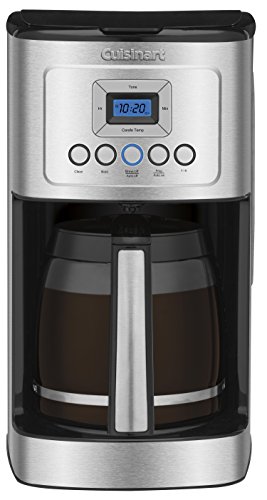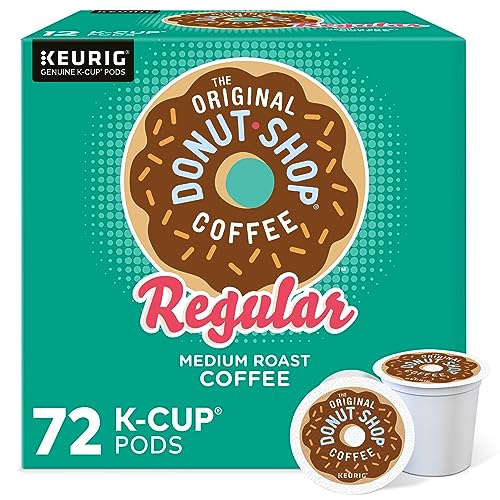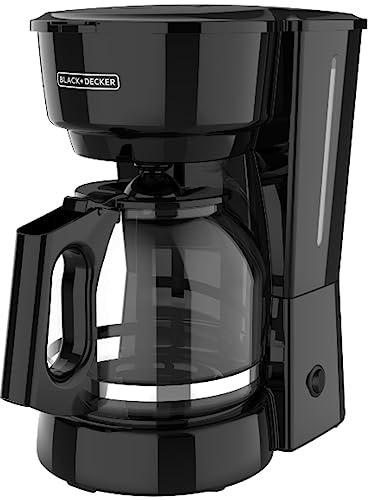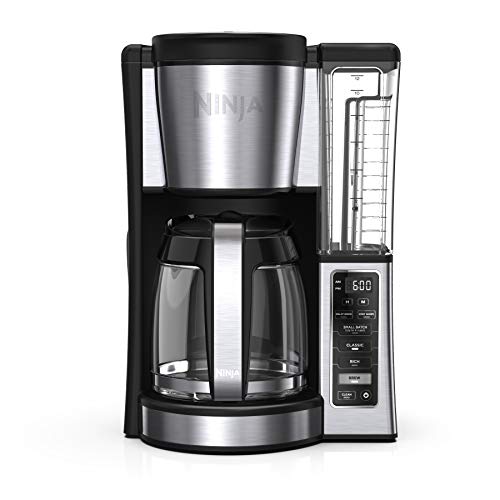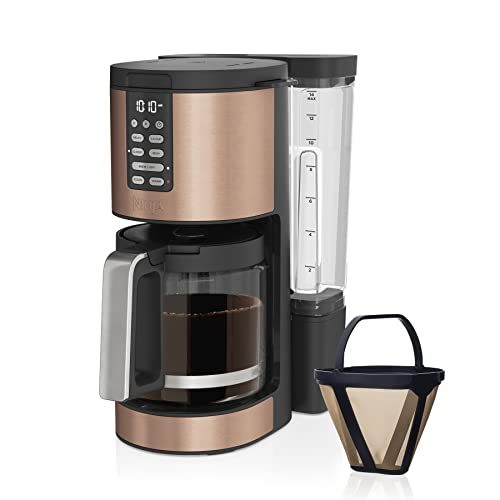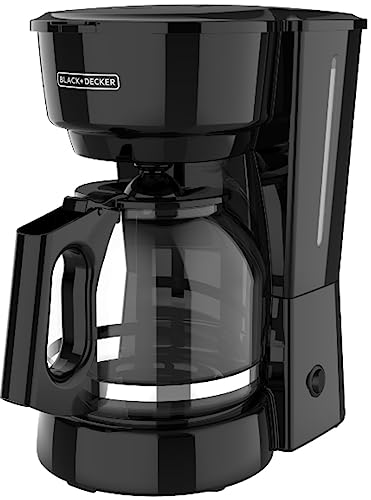- What Is a Kegerator?
- How Does A Kegerator Work?
- Kegerator Components – From Keg to Tap
- Configurations Of Kegerator
- How to Use a Kegerator?
- Different Types of Kegerators
- Features of Kegerator
- Problems With Using Kegerator?
- How To Solve Problems When Using Kegerator?
- Why use a kegerator? Benefits Of Using Kegerator
- When should you not use a kegerator?
- Kegerator Cleaning Tips – How To Keep Your Beer Tasting Great?
- Are Kegerators Refrigerated?
- FAQs
- Conclusion
What Is a Kegerator? Kegerator Components

Have you heard of Kegerator yet? So, What Is a Kegerator? A kegerator is a device that stores and dispenses beer from a keg. It consists of a refrigerator unit that has been designed to include a built-in tap for dispensing the beer. They are often used in homes and bars and can be either freestanding or built into the furniture, but the most common type is a standalone unit that sits on the floor. Kegerators come in a variety of sizes and can accommodate different types of kegs, so it’s important to do your research before you buy one. The most common type of Kegerator is the residential draft beer system, which includes a Cabinet, Draft Tower, Faucet, Faucet Handle, Drip Tray, Keg Coupler (Keg Tag), Keg, CO2 Regulator, CO2 Tank, Beer Line, Gas Line. Hose Clamps Commercial draft beer systems are also available and are used in restaurants and bars.
In this blog post, we’ll give you everything you need to know about kegerators, including how they work and the types available on the market. We’ll also share some tips for keeping your Kegerator in good condition. So whether you’re considering purchasing a kegerator or just want to learn more about them, keep reading!
What Is a Kegerator?
A kegerator is a device that has been designed to store and dispense beer from a keg. The word “kegerator” is a portmanteau of the words “keg” and “refrigerator.” Kegerators come in both commercial and residential versions. A commercial kegerator is used to dispense beer in a bar or restaurant setting, while a residential kegerator can be used to dispense beer at home. Kegerators are commonly used to store and distribute draft beer. However, they can also be used to make wine, kombucha, cold brew coffee, and carbonated drinks, juices, etc., thanks to certain modifier kits.
Kegerators are becoming increasingly popular, and many different models are available on the market. Kegerators come in wide varieties (1 faucet, 2 faucets, mini, outdoor or commercial) and come in various designs, sizes and shapes. Commercial kegerators often have multiple faucets that are often associated with ice machines but most often use a smaller model that can be designed to be placed in a home bar along with an under-table ice maker, wine cooler, and cooler. Washing dishes,…
Currently, Kegerator is considered the most convenient and best beer storage and distribution device. Beer is usually stored at 38 degrees F in a Kegerator, which is the ideal temperature to create a beer with the right amount of head and without too much foam, but that’s just the majority, it depends. Each type of beer adjusts the temperature accordingly. Many bar owners, restaurateurs or home brewers, do not know how to adjust, causing beer to change temperature too much, and quality and taste are also significantly reduced.
In addition, we should also adjust the amount of CO2 in the tank to be able to control the carbon dioxide in the beer and not let it go flat quickly. The ideal CO2 index is around 2.5-2.7 volumes. If the beer is too carbonated, it will be very foamy when poured and you will not be able to taste the true flavour of the beer. Conversely, if there is not enough CO2 in the beer, it will quickly go flat and lose its flavour.
Most of us use CO2 canisters that are only good for 2-3 weeks, then we have to buy new ones. This way of using is not too effective, we should buy a CO2 regulator with a solenoid valve so that it can be set at a certain level and not let the CO2 canisters run out too quickly, saving costs.
Beer stored in a kegerator can last up to 6 months, depending on the type of beer. However, you wouldn’t expect to last that long before getting drunk, would you?
Besides being a great way to store and dispense beer, kegerators can also be used as a party icebreaker or decoration. They are often seen as a status symbol and can be a conversation starter at any gathering.
How Does A Kegerator Work?
A kegerator is essentially a mini fridge that has been outfitted with a draft beer system. The fridge part of the Kegerator keeps the beer cold and at the ideal temperature for serving. The draft beer system includes a CO2 tank, regulator, airlines, and hoses. The CO2 tank is used to pressurize the keg and dispense the beer. The airlines are used to connect the CO2 tank to the keg. The hoses are used to connect the keg to the tap.
Most kegerators have one tap. However, some models have multiple taps. There are also mini kegerators that have a single tap and are small enough to fit on a countertop or table.
When you’re ready to dispense the beer, you’ll need to ensure that the keg is properly pressurized. This can be done by adjusting the regulator on the CO2 tank. Once the keg is pressurized, you can open the tap and dispense the beer. It’s important to note that you should never open the CO2 tank when there is beer in the keg. This can cause the beer to foam and go flat.
It’s also important to clean your Kegerator on a regular basis. This will help to prevent bacteria from growing and will keep your beer tasting fresh. Be sure to clean all of the parts of your Kegerator, including the taps, hoses, and lines.
In short, Kegerators work by using CO2 to dispense the beer from the keg and keep it fresh. The CO2 is stored in a tank that is connected to the keg. When you want to dispense the beer, you open the tap, which releases the CO2 into. The keg pushes the beer out of the tap and into your glass.
The CO2 pressure is regulated by a CO2 regulator, which is attached to the CO2 tank. The regulator controls the amount of CO2 that is released into the keg, and this will determine how much foam is in your beer. Too much foam (or head) can be avoided by adjusting the PSI or by using a foaming agent such as glycerin. In addition, the regulator will also keep the beer fresh by ensuring that the right amount of CO2 is always present in the keg.
Kegerator Components – From Keg to Tap
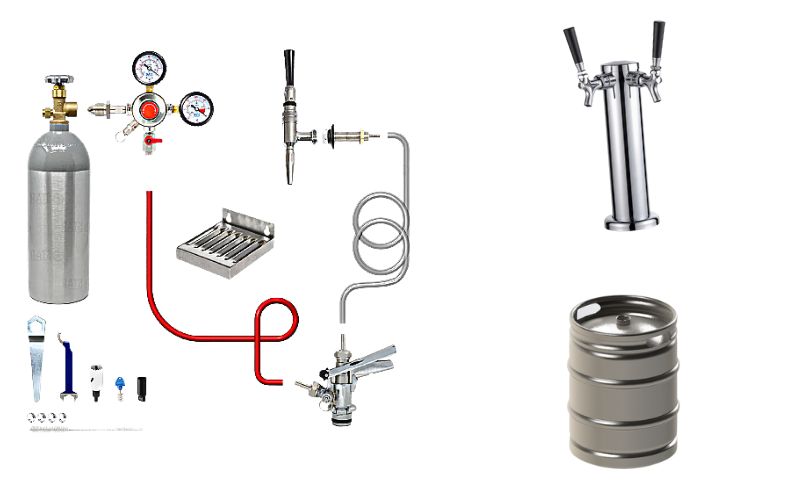
Cabinet
The cabinet as a refrigerator contains most of the Kegerator’s parts, usually made of stainless steel or aluminium. Cabinets have different sizes and design shapes depending on the type, the number of faucets and the needs of the buyer. Many cabinets can hold many different tanks containing different drinks to satisfy the needs of drinkers.
Draft Tower
The draft tower is the part of the Kegerator that contains the hose (or faucet) through which the beer is dispensed. Pull towers are usually made of stainless steel, plastic or chrome-plated brass. Draft towers often come in a variety of styles, sizes, and numbers of faucets. The number of faucets a draft tower has depends on the model of the water dispenser and the needs of the user.
Faucet
The faucet is the part of the Kegerator through which the beer is dispensed. Faucets are usually made of stainless steel, plastic or chrome-plated brass. The number of faucets that a kegerator has depends on the model. Some models have one faucet, while others have two or more.
Faucet Handle
The faucet handle is the part of the Kegerator that is used to open and close the faucet. Faucet handles are usually made of stainless steel, plastic or chrome-plated brass. As well as faucet handle faucets come in a variety of styles, designs, shapes and finishes. You can even design the handle to match your style and brand.
Drip Tray
The drip tray is a shallow tray that is placed under the faucet (or faucets) to catch any beer that drips when the faucet is opened. The drip tray is usually made of stainless steel or plastic.
Keg Coupler (Keg Tag)
The keg coupler is the part of the Kegerator that connects the keg to the draft tower. The keg coupler has a handle that is used to open and close the valve on the keg. Keg couplers are usually made of stainless steel, plastic or chrome-plated brass. The type of keg coupler that you need depends on the type of keg that you are using. There are two main types of keg couplers: D system and S system.
Keg
A barrel is a large metal barrel used to store and transport your drinks (beer mainly). Keys are usually made of stainless steel. The size of the keg depends on the amount of beverage (beer, kombucha, juice,…) it contains. There are 5 main types of crates for kegerators: Mini Keg, Sixth Barrel Keg, Cornelius Keg, Slim Keg, Quarter Barrel Keg and Half Barrel Keg. But the two most commonly used barrels are the Half Barrel Keg and the Quarter Barrel Keg.
CO2 Regulator
The CO2 regulator is the part of the Kegerator that controls the amount of CO2 that is released into the keg. The CO2 regulator is attached to the CO2 tank. The CO2 regulator has a gauge that shows the pressure in the keg. The CO2 regulator also has a knob that is used to adjust the pressure in the keg. The CO2 regulator is used to keep the beer fresh by ensuring that the right amount of CO2 is always present in the keg.
The normal tank pressure is between 8 and 12 PSI. But you can set it to your preference. If the pressure is too high, the beer will be foamy. If the pressure is too low, the beer will be flat. The perfect pressure depends on the type of beer, climate and storage conditions.
CO2 Tank
The CO2 tank is a large metal tank that contains CO2 gas. The CO2 tank is attached to the CO2 regulator. The CO2 tank is used to supply CO2 gas to the keg. The CO2 tank is usually made of aluminium or stainless steel.
Beer Line
The beer line is the part of the Kegerator that connects the keg to the draft tower. The beer line is where the CO2 pushes your drink out of the coupler and onto the beer tower.
The beer line is made of a flexible material that can withstand high pressures. The beer line is usually made of vinyl, polyethene or silicone. The beer line length depends on the distance between the keg and the draft tower.
The beer line has a diameter of 3/16 inches (4.7 mm) or 1/4 inch (6.4 mm). The 3/16 inch (4.7 mm) beer line is used for short distances, and the 1/4 inch (6.4 mm) beer line is used for long distances.
Gas Line
The gas line is the part of the Kegerator that connects the CO2 tank to the keg. A gas Line is a gas pipe that conducts CO2 through the coupler from the CO2 tank, pushing the drink out of the barrel. The gas line is made of a flexible material that can withstand high pressures. The gas line is usually made of polyethene.
Hose Clamps
Hose clamps are metal or plastic clips used to attach the hoses to the fittings. These clamps help ensure that the gas line and beer line are well connected. Pipe clamps come in a variety of styles, often requiring tools to operate. Among them, there is the Finger Screw Clamp, which is quite beneficial because it is easy to adjust without the need for a toolkit. Hose clamps are tightened with a screwdriver or a wrench.
Configurations Of Kegerator
There are two main types of kegerators: those that use a CO2 tank and those that do not. CO2-powered kegerators are more popular because they allow you to control the carbonation level of your beer. Kegerators that do not use a CO2 tank are less popular because they require you to store your beer under pressure, which can result in flat beer.
CO2-Powered Kegerators
CO2-powered kegerators are the most popular type of Kegerator. CO2-powered kegerators use a CO2 tank to carbonate your beer. CO2-powered kegerators allow you to control the carbonation level of your beer. CO2-powered kegerators are more expensive than kegerators that do not use a CO2 tank.

Non-CO2 Powered Kegerators
Non-CO2-powered kegerators are less popular than CO2-powered kegerators. Non-CO2 powered kegerators do not use a CO2 tank to carbonate your beer. Non-CO2-powered kegerators are less expensive than CO2-powered kegerators. Non-CO2 powered kegerators can result in flat beer if not used properly.
Now, you’re reading “What Is a Kegerator?” of Phoenix Landing Bar. Keep reading!
How to Use a Kegerator?
If you’ve never used a kegerator before, don’t worry. They’re actually quite simple to use. Here are the steps you need to follow to use your Kegerator:
1. Clean your keg and all of its parts. This includes the beer lines, gas lines, fittings, and taps.
2. Connect the gas line to the CO2 tank.
3. Connect the beer line to the keg.
4. Turn on the CO2 tank and set the pressure to 10-12 PSI.
5. Check for leaks. Make sure that all of the connections are secure and there are no leaks.
6. Cool your keg to the desired temperature. This is usually done by placing the keg in the fridge for 24 hours.
7. Pour your beer and enjoy!
Kegerators are a great way to serve beer, but they’re also a great way to save money. Buying beer in bulk can save you a lot of money, and kegerators allow you to store your beer for long periods of time.
Kegerators are also a great way to entertain guests. If you have a kegerator, you can be sure that your guests will always have something to drink.
Different Types of Kegerators
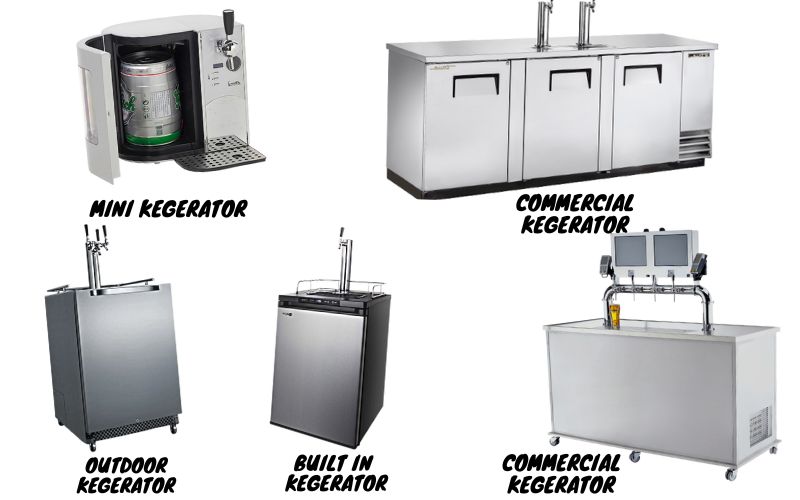
Mini Kegerator
Target users: Suitable for homes that don’t have much space or economic conditions are not high enough but still want a kegerator to enjoy good beer, this is the optimal solution for you. This type of Kegerator is quite tiny in size, suitable for a 5L tank.
Pros:
Doesn’t take up much space, is compact, and is a low investment, but you come to give you a great beer experience. Easy to carry on the go, placed right on the tabletop, and easily stored when not in use.
Mini Kegerator is an item for those who buy Kegerator to enjoy beer but do not dare to risk financial investment to buy a large size.
Cons:
The cooling system is not too powerful, so it cannot store beer for a long time, about 2-3 days. And you can only use a 5L tank with this type of Kegerator. And few manufacturers produce 5L barrels, only Heineken, Coors Light, and Newcastle Brown Ale are the manufacturers that widely produce this type of barrel.
Summary:
- Low investment cost, affordable price
- Small, compact, does not take up much space
- Only holds 5L cartons (10 pints of beer)
- The beer selection is quite limited
Outdoor Kegerators
Target users: Usually those who want to put a kegerator in the garage, backyard, or on rooftop to enjoy beers in great spaces or suitable for family spaces. Outdoor kegerators are designed to be used outdoors. Outdoor kegerators are great for picnics, barbecues, and parties.
Pros:
Outdoor kegerators must be specially designed to withstand the elements and regular operation in order to enjoy a beer that retains its original taste.
Therefore, they are usually made of high-quality materials, have strong external shells, and use thicker insulation. This ensures that your beer stays cold in hot weather and does not freeze in cold weather.
Cons:
The price of outdoor kegerators is usually higher than indoor kegerators because they are made of high-quality materials and have special features to withstand the elements.
Summary:
- Flexible can be used in many spaces.
- Can withstand the harsh elements of the environment (thermal fluctuations)
- Can be freely moved on the ground or preset
- The cost is higher than the indoor unit
Portable Kegerators
Portable kegerators are small, compact kegerators that can be easily moved from one location to another. Portable kegerators are great for tailgating, camping, and road trips.
Commercial Kegerators
Target users: Commerical Kegerator is often used in bars, pubs or restaurants, of course, can still be used indoors, if so, it’s too good. This type of Kegerator is usually quite large in size and the price is usually higher than regular kegerators. Because they can dispense multiple drinks at once.
Many owners often design additional kegerators to have space to cool bottles, cans, and other items a bartender needs for their work as a wine cooler. In addition, some machines also design additional ice machines.
Pros:
- Large capacity can store more kegs
- Can dispense multiple drinks at once
- More durable than home kegerators
Cons: Higher price
Summary:
- Larger size, usually used in commercial establishments. Used for bars, pubs, restaurants
- Can store and dispense multiple drinks at once
- More expensive than regular kegerators
- There are many models, sizes, and features to choose from
Freestanding & Built-In Kegerators
Freestanding kegerators are designed to be placed on the floor, while built-in kegerators are designed to be installed into a countertop or cabinets. Freestanding kegerators are great for home use, while built-in kegerators are great for commercial use.
Now, you’re reading “What Is a Kegerator?” of Phoenix Landing Bar. Keep reading!
Freestanding Kegerator
Target users: This is considered the most commonly used type of Kegerator today, trusted by most people. They are attached with wheels at the bottom that can move them anywhere in your home, such as the living room, backyard, garage, rooftop,…
Pros:
- Can be placed anywhere in the house
- Easy to set up and use
- There are many different models, sizes, shapes and finishes on the market. Make it easy for you to choose
- Some kegerators have added features such as digital displays and modern faucets.
Cons:
May take up more space than a built-in kegerator
Summary:
- Affordable price, suitable for many households.
- Lower investment cost than built-in and outdoor Kegerator.
- Can be placed anywhere in the house
- Many different models, sizes, shapes and finishes on the market
Built-In Kegerator
Target users: For those who want to fix the Kegerator seamlessly with their home (fixed place like dishwasher, oven, …)
Pros:
- Helps save space, creating a neat feeling.
- Does not move much less damage to Kegerator
Cons:
- Higher investment cost than freestanding Kegerator.
- More difficult to set up and use. Installation is more difficult than regular kegerators, if you are not a DIYer it is advisable to call a professional to set up
Summary:
- Luxurious, modern design, suitable for high-end establishments or households.
- The space-saving feature helps you save valuable space
- Saves space, and creates a neater feeling
- More expensive than a freestanding kegerator
- Difficult to set up and use than regular kegerators.
Features of Kegerator
Some of the features you might want to consider when purchasing a kegerator include:
-Size and capacity: How many beers do you want to be able to store at once? Do you plan on storing additional bottles or cans in your Kegerator?
-Type of beer taps: Would you like a single-tap or multi-tap Kegerator? How many beers do you plan on serving at once?
-Portability: Do you want a portable kegerator that you can take with you tailgating or camping? Or do you want a more permanent solution for your home bar?
-Ease of use: How easy is the Kegerator to set up and use? Does it come with clear instructions?
-Energy efficiency: Look for a kegerator that is Energy Star compliant to save on your electricity bills.
Problems With Using Kegerator?
- Leaking: A keg stored in a Kegerator may start to leak if it is not properly pressurized or if the O-rings on the keg coupler are not sealing correctly.
- Temperature fluctuations: Incorrect temperature settings can cause the beer to foam or become. 38 degrees F is the ideal temperature to store beer
- Unsanitary conditions: Kegerators can become a breeding ground for bacteria and mould if they are not cleaned regularly.
- CO2 leaks: A CO2 leak can cause the beer to go flat or taste sour.
- Kegs are running out: It is important to have extra kegs on hand so that you do not run out of beer!
- Foamy beer: If the beer is too cold, it will be foamy. If the beer is too warm, it will not be foamy.
How To Solve Problems When Using Kegerator?
- Check for leaks: Inspect the keg, coupler, and tubing for any signs of leaks.
- Clean regularly: Clean the inside of the Kegerator and all of its parts on a regular basis to prevent bacteria and mold from growing.
- Adjust the temperature: Make sure the Kegerator is set to the correct temperature to avoid foam or flat beer.
- Check for CO2 leaks: Inspect the CO2 tank, regulator, and tubing for any signs of leaks. 8-12 PSI is the ideal CO2 pressure to have a good beer
- Have extra kegs on hand: Always have at least one spare keg on hand so that you do not run out of beer!
Why use a kegerator? Benefits Of Using Kegerator
There are many benefits of using a kegerator, including:
- Convenience: Kegerators allow you to have draft beer on tap whenever you want it.
- Cost savings: Buying beer in bulk can save you money in the long run.
- Better flavour: Freshome overcarbonated.3. Clogged lines: A build-up of yeast and bacteria can cause clogged beer lines, which can lead to flat or off-flavored beer.4. Dirty tap handles: Tap handles can become contaminated with yeast and bacteria, which can lead to off-flavors in the beer.
- Improved sanitation: Kegerators help to keep your beer lines clean and free of bacteria.
- Better carbonation: Kegerators allow you to carbonate your beer to the perfect level, which can improve the flavor and mouthfeel.
When should you not use a kegerator?
There are a few circumstances when it might not be ideal to use a kegerator, including:
- If you do not have enough space: Kegerators can take up a lot of space, so make sure you have enough room before purchasing one.
- If you do not drink beer often: If you only drink beer on occasion, it might not be worth it to invest in a kegerator.
Kegerator Cleaning Tips – How To Keep Your Beer Tasting Great?
It is important to clean your Kegerator on a regular basis to prevent bacteria and mold from growing. Here are a few tips on how to keep your Kegerator clean:
1. Clean the inside of the Kegerator with a mild soap and water solution. Rinse well and dry with a clean towel.
2. Clean the outside of the keg with a mild soap and water solution. Rinse well and dry with a clean towel.
3. Soak the taps in a vinegar solution overnight to remove any build-up on them. Rinse well and dry with a clean towel.
4. Inspect the O-rings on the coupler for any cracks or damage. Replace if necessary.
5. Clean the CO2 tank, regulator, and tubing with a mild soap and water solution. Rinse well and dry with a clean towel.
6. Inspect the beer lines for any clogs or buildup. Clean if necessary.
7. Clean the tap handles with a mild soap and water solution. Rinse well and dry with a clean towel.
8. Monthly, deep clean your Kegerator by soaking all of the parts in a vinegar solution overnight. Rinse well and dry with a clean towel before reassembling.
Are Kegerators Refrigerated?
Most kegerators are refrigerated, but there are a few that are not. Refrigerated kegerators keep the beer at a consistent temperature, which is important for maintaining the flavour and carbonation of the beer. Non-refrigerated kegerators do not have this feature, so the beer may go flat or become warm over time. Therefore, if you are planning on using a non-refrigerated kegerator, it is important to store the beer in a cool, dark place to prevent it from going bad.
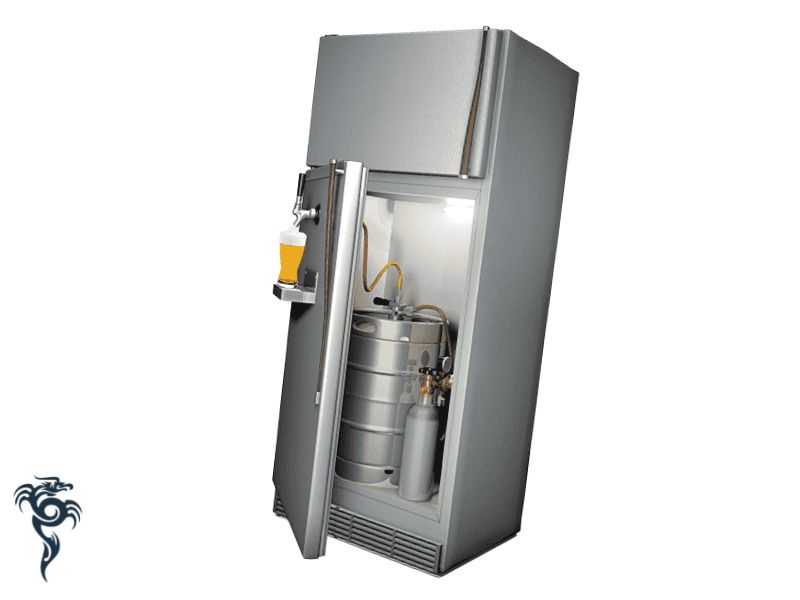
Conversion Kits – Refrigerator Into Kegerator
Did you know with your old used refrigerator or cheap refrigerator (at the dump shop, classifieds,…) still working well, we can turn them into kegerators thanks to the converter kit. Condition this refrigerator must have enough space to hold one bin. Refrigerators with internal compartments and steps that do not have enough space to hold one container will not be used. Conversion kits contain everything you need to turn your fridge into a beer dispenser, including a CO2 tank, regulator, coupler, beer lines, and taps. Most kits also include instructions on how to set up your new Kegerator. If you are handy, you can probably install the kit yourself. However, if you are not comfortable doing so, you can always hire a professional to do it for you. Kegerators come in a variety of sizes to accommodate different needs. The most common sizes are full-size (1/2 barrel), pony (1/4 barrel), and mini (1/6 barrel). Full-size kegerators are the largest and can accommodate up to a half-barrel keg. Pony kegs are smaller and can accommodate up to a quarter-barrel keg. Mini kegs are the smallest and can accommodate up to a sixth-barrel keg. If you are unsure which size you need, it is best to measure the space where you will place your Kegerator before making a purchase.
Now, you’re reading “What Is a Kegerator?” of Phoenix Landing Bar. Keep reading!
FAQs
How much does a typical kegerator cost to purchase and operate on an annual basis?
The cost of a kegerator will vary depending on the model and features you choose. The average cost of a basic kegerator is around $400, while a more feature-rich model can cost up to $1,000. The cost of operating a kegerator will depend on the price of beer, how often you drink, and how much you consume. If you drink beer regularly, you can expect to spend around $200 per year on beer.
How often should I clean my Kegerator?
You should clean your Kegerator at least once a month to prevent bacteria and mould from growing. Deep cleaning your Kegerator every 2-5 months is also recommended.
How Do You Choose The Right Kegerator For Your Needs And Budget?
When choosing a kegerator, you will need to consider your needs and budget. There are a variety of kegerators on the market, so it is important to find one that fits your specific needs. If you are on a tight budget, you may want to consider a used or refurbished kegerator. You should also decide if you need a refrigerated or non-refrigerated model. Refrigerated models are more expensive, but they will keep your beer at a consistent temperature. Non-refrigerated models are less expensive, but the beer may go flat or become warm over time.
Are There Any Downsides To Owning A Kegerator?
The main downside to owning a kegerator is the cost. Kegerators can be expensive, so you will need to factor this into your budget. Additionally, kegerators take up a lot of space, so make sure you have enough room before purchasing one. If you only drink beer on occasion, it might not be worth it to invest in a kegerator.
Conclusion
In short, What Is A Kegerator? A kegerator is a refrigerator that stores and dispenses beer. Kegerators come in a variety of sizes and can be either refrigerated or non-refrigerated. The cost of a kegerator will vary depending on the model and features you choose. Kegerators are a great way to enjoy fresh beer. Make sure you factor the cost into your budget before making a purchase. If you are looking for a fun way to dispense beer, a kegerator might be right for you! Thanks for reading, and feel free to leave any questions or comments below. Thanks for reading!
If you want more information to refer to phoenixlandingbar.com
